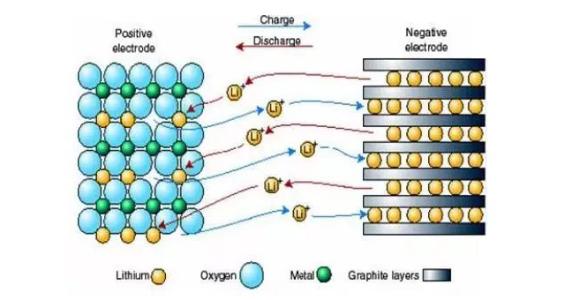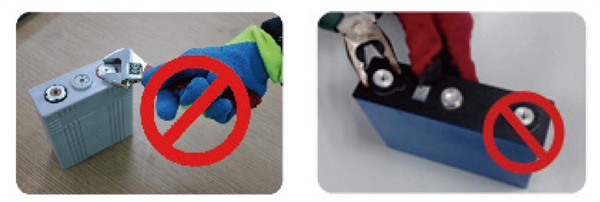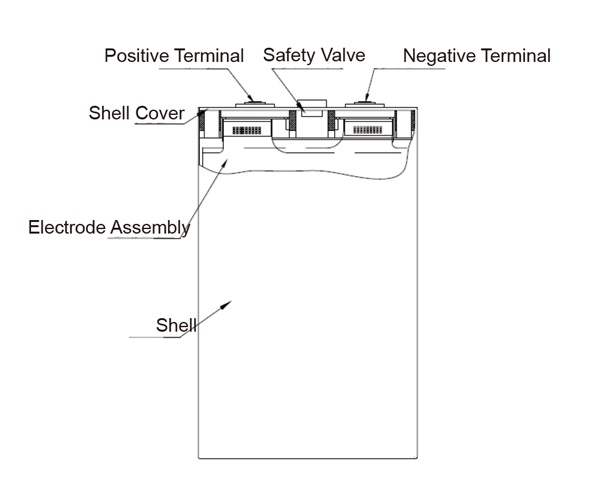CALB Battery User Manual
Caution
I. A BMS (battery management system or battery protection system) must be used under any circumstance when using or storing battery, to ensure the batteries are used under normal conditions (including normal voltage range, the normal current range, normal temperature range, normal humidity range, the normal pressure range, etc., about the normal defined criteria, please contact us). If the batteries are used without a battery management system (battery protection system), batteries’ will be easily damaged, which will even lead to unpredictable accidents. (Note that normal conditions for the battery charging, battery discharging and battery storage are not the same)
II.Reverse charging and discharging the battery is prohibited under any conditions .Positive and negative terminals of the battery can not be connected directly under any condition.
III. During use, batteries should be away from heat, sources of ignition. Do not drop the battery, knock the battery, strike the battery or other physical damage to the battery.
IV. This battery can only be charged with matched lithium battery charger.
Product Introduction
The lithium-ion batteries produced by CALB have the advantages of high energy density, long life cycle, high power density, high security, even good performance under low temperature. Based on the different case material,the CALB battery can be sorted to molded battery, metal shell batteries, soft pack batteries. They can be applied in: electric vehicles, large-scale energy storage power station systems, small distributed energy storage systems, mineral power supply, communication station, and rail transportation, etc.
The working principle of Lithium-ion batteries
Generally, the cathode material of the lithium-ion battery will choose lithium transition metal oxide with a higher redox potential , commonly lithium cobalt oxide, lithium manganese oxide, lithium iron phosphate and layered mixed cobalt/nickel /manganese oxides. Lithium intercalation material with near lithium potential will be selected as negative electrode material, commonly the hard carbon, graphite, materials. The principle of charging and discharging of lithium-ion batteries is shown in the diagram, the lithium ions shuttle between the positive and negative back and forth during charging and discharging process , so the lithium-ion batteries are also known as "rocking chair” battery.

Lithium ion battery charge and discharge diagram
The charge and discharge mechanism of lithium-ion battery can be described as the following chemical formula (take lithium iron phosphate for example).
The structure of battery
Battery is made up by the electrode assembly, the positive terminal and negative terminal, safety valve, the shell cover and the shell. Electrode group consists of positive and negative electrode terminal and seperator (seperator plays a barrier between the positive and negative electrode).The shell interior is filled with the electrolyte. Safety valve on the shell cover can release the battery internal pressure and prevent explosion.
Product installation instructions
Battery Requirements
1) Please read this instruction and other instructions carefully before using the battery.
2) Unless otherwise specified, the charging and discharging parameters of CALB lithium iron phosphate batteries series are described as follows:
• Cut-off charging voltage for single battery: 3.65V (Switch off voltage for single battery charging: 3.8V. Once the cell voltage rises to 3.8V, the charging current should be immediately cut off);
• Cut-off charging voltage for N batteries in series: N × 3.65V (when the cell voltage rises to 3.65V, the charger should be able to automatically change to constant voltage charging mode);
• The float status: cutoff charging voltage for single battery is set to 3.4V, cut-off voltage for N batteries charging in series is N×3.4V, with a maximum voltage of 3.4V cut-off;
• Alarming discharging voltage for single battery: 2.8V (during the discharging process, when the cell voltage drops to 2.8V, BMS will alarm, we recommend stopping discharging now);
• Cut-off discharging voltage for single battery: 2.5V (under -20íŠ condition,the cutoff voltage for battery discharging is 2.0V.);
3) CALB lithium-ion battery products shall be equipped with a special lithium battery management system and lithium battery charger with mode of constant current and voltage limiting. For a few small-capacity batteries are used in series, you can also use lithium batteries protection board of reliable performance;
4) In any case, terminal voltage of single cells must be monitored in real-time. Battery packs in series charging or discharging testing without management system or protective board is forbidden, avoiding battery overcharge or over-discharge.
5) BMS used shall have function of insulation resistance detection, when the battery and BMS installation is complete, all protection parameters would be the first to set. Be sure to confirm the battery power when setting the initial value of SOC;
6) Communication protocol must be determined between the BMS and charger and motor controller. Make sure of the signal butt between BMS and charger and motor controller to ensure that the charger and motor controller is monitored in real-time by BMS during charging or discharging, avoiding over-charging or over-discharging.
7) Except in special circumstances, fresh battery from factory is only 30% charged. Before BMS and charger is commissioned, batteries are prohibited for long time use to avoid overcharging or over-discharging ;During battery use, we recommend charging and discharging range between 10-90% DOD (according to the principle of low depth of charge and discharge);
8) Screwing the battery terminal is forbidden without permission.
9) Damaging the battery safety valve is forbidden without permission, Damaging the battery safety valve is forbidden without permission

Screwing the battery terminal is forbidden without permission.

Damaging the battery safety valve is forbidden without permission.
Power System Requirements
1) High-voltage main circuit and low voltage electrical circuit for battery pack shall be properly isolated. Use reliable DC air circuit breakers and fast DC fuses to make sure the safety under high-voltage.
2) Do not separate the lead power cord from the battery of the pack to charge a low voltage electronics in car individually.
3) The cabinet holding the system must be equipped with lightning protection and anti-tampering measures.
4) When splitting the system, battery system power should be disconnected to make sure the system can against electric shock. When the system is assembled, it must be ensure that joints between the power supply modules are connected correctly and firmly.
Power Module layout requirements
1) Be cautious when integrating the battery into power system. Not only should you take full consideration of ventilation inside the power module, but also take effective dust proof, waterproof, anti-snow, and anti-impact measures;
2) Take full consideration of the convenience of repair and maintenance when laying out the batteries.
3) Integrate battery modules into group according to the maximum possible number of cells that a individual BMS sub-module can manage ablity.
4) Ensure high-pressure cables and wiring harnesses short and smooth when laying out the batteries and battery modules.
5) Because the drive motors and motor controllers are strong heating element, batteries should be layout away from them. When batteries are near the motor, proper insulation measures shall be taken ;
6) When many batteries are laid out intensively, avoid the situation that adjacent terminal voltage of the battery packs is higher than safe voltage to prevent dangerous electric shock during construction and maintenance.
7) If the system is lay out in a compute room, fireproof materials should be equipped on the walls, ceilings and walls, firefighting equipment should be equipped. There should be no flammable, explosive, corrosive gases or article around the site.






